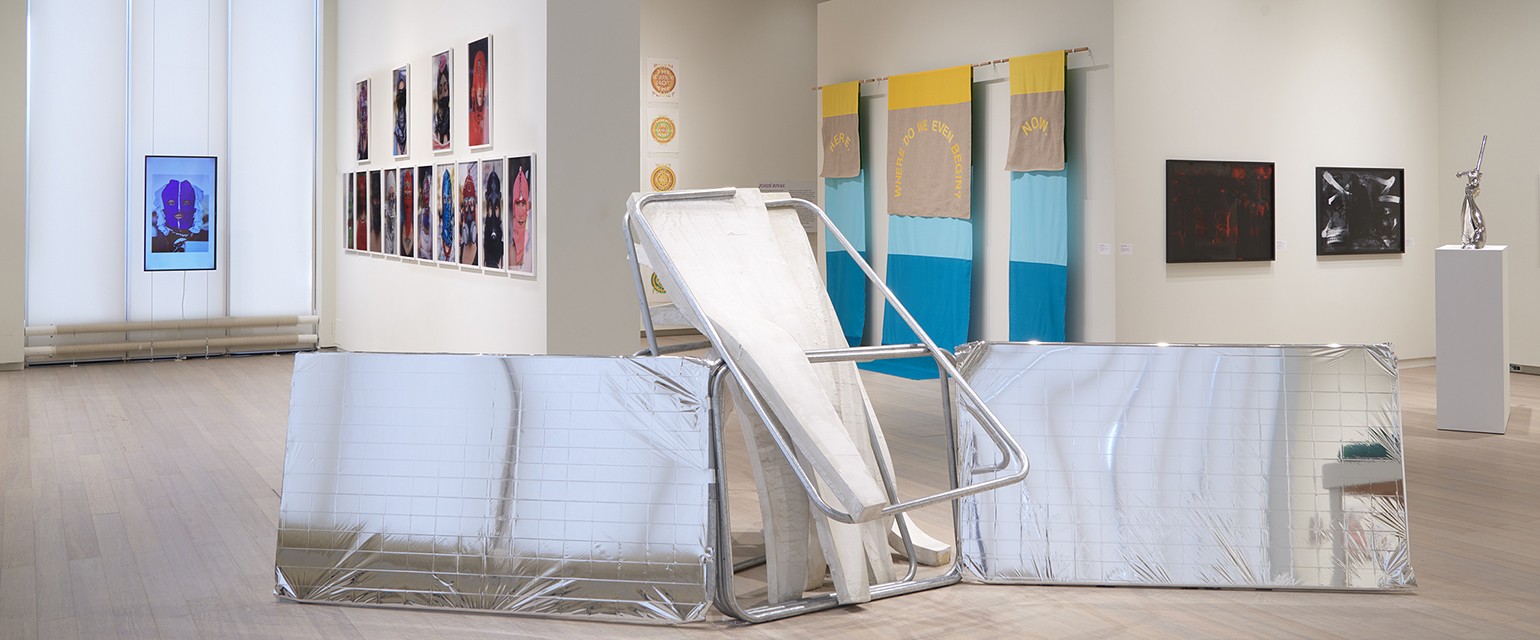The Protest and The Recuperation
The Protest and The Recuperation is a survey of artistic perspectives and responses on the global phenomenon of mass protest, as well as recuperative strategies of resistance. In these times, contemporary art has the capacity to focus our attention differently to what we learn from various media sources, or even our own experiences in protest. This exhibition presents a focused selection of works that register the power of mass protest from a deeply human perspective. It highlights the individual-to-individual connection in the collective spaces of the mass protest, recovery and care.
Over the past several years we have seen a marked increase in the globalization of mass protests, which oftentimes organically arose from local political conditions exacerbated by the growing gap in economic opportunities. The populace, or what Antonio Negri and Michael Hardt call “the multitudes,” have been expressing their deep dissatisfaction through street protests about issues ranging from women’s rights to citizenship to climate change activism. From Washington D.C. and Standing Rock, South Dakota to Cairo, Egypt and Hong Kong to hundreds of small towns across India, people from large swaths of demographic sectors have been literally taking to the streets to voice their concern and outrage.
This exhibition—featuring 10 contemporary artists from around the globe from Kuala Lumpur, Malaysia to Santiago, Chile—is in dialogue with a larger history than it is able to represent. From the Arab Spring in 2011 through 2020 we have seen a constant ebb and flow of uprisings, with a renewed surge in the United States after President Trump took office, as seen in the stunning 2017 Women’s March. In 2019 we saw a significant percentage of Hong Kongers come together to fight against China’s “big hand,” the Friday protests in Algiers and the protests against government corruption in Baghdad that fueled sectarian divides within Iraq. In 2020, in spite of the COVID-19 virus pandemic we saw a swell of anti-racism protests against police brutality and the rising up of citizens against election corruption in Belarus.
INSTALLATION VIEWS
Image Carousel with 17 slides
A carousel is a rotating set of images. Use the previous and next buttons to change the displayed slide
-
Slide 1: Installation view from the exhibition “The Protest and The Recuperation” on view June 12 through August 14, 2021 at the Wallach Art Gallery, Columbia University. Photograph by Kyle Knodell.
-
Slide 2: Installation view showing work by the artist Lara Baladi from the exhibition “The Protest and The Recuperation” on view at the Wallach Art Gallery, Columbia University. Photograph by Kyle Knodell.
-
Slide 3: Installation view showing works by the artists Lara Baladi and Hank Willis Thomas from the exhibition “The Protest and The Recuperation” on view at the Wallach Art Gallery, Columbia University. Photograph by Kyle Knodell.
-
Slide 4: Installation view showing work by the artist Hank Willis Thomas from the exhibition “The Protest and The Recuperation” on view at the Wallach Art Gallery, Columbia University. Photograph by Kyle Knodell.
-
Slide 5: Installation view showing work by the artist Hank Willis Thomas from the exhibition “The Protest and The Recuperation” on view at the Wallach Art Gallery, Columbia University. Photograph by Kyle Knodell.
-
Slide 6: Installation view showing work by the artist Sreshta Rit Premnath from the exhibition “The Protest and The Recuperation” on view at the Wallach Art Gallery, Columbia University. Photograph by Kyle Knodell.
-
Slide 7: Installation view showing work by the artist Rachael Haynes from the exhibition “The Protest and The Recuperation” on view at the Wallach Art Gallery, Columbia University. Photograph by Kyle Knodell.
-
Slide 8: Installation view showing work by the artist Josué Rivas from the exhibition “The Protest and The Recuperation” on view at the Wallach Art Gallery, Columbia University. Photograph by Kyle Knodell.
-
Slide 9: Installation view showing work by the artist Josué Rivas from the exhibition “The Protest and The Recuperation” on view at the Wallach Art Gallery, Columbia University. Photograph by Kyle Knodell.
-
Slide 10: Installation view showing work by the artist Eugenia Vargas Pereira from the exhibition “The Protest and The Recuperation” on view at the Wallach Art Gallery, Columbia University. Photograph by Kyle Knodell.
-
Slide 11: Installation view showing work by the artist Sreshta Rit Premnath from the exhibition “The Protest and The Recuperation” on view at the Wallach Art Gallery, Columbia University. Photograph by Kyle Knodell.
-
Slide 12: Installation view from the exhibition “The Protest and The Recuperation” on view June 12 through August 14, 2021 at the Wallach Art Gallery, Columbia University. Photograph by Kyle Knodell.
-
Slide 13: Installation view showing works by the artists Chow Chun Fai and Khalid Albaih from the exhibition “The Protest and The Recuperation” on view at the Wallach Art Gallery, Columbia University. Photograph by Kyle Knodell.
-
Slide 14: Installation view showing work by the artist Khalid Albaih from the exhibition “The Protest and The Recuperation” on view at the Wallach Art Gallery, Columbia University. Photograph by Kyle Knodell.
-
Slide 15: Installation view showing work by the artist Oliver Ressler from the exhibition “The Protest and The Recuperation” on view at the Wallach Art Gallery, Columbia University. Photograph by Kyle Knodell.
-
Slide 16: Installation view showing work by the artist Sharon Chin from the exhibition “The Protest and The Recuperation” on view at the Wallach Art Gallery, Columbia University. Photograph by Kyle Knodell.
-
Slide 17: Installation view showing works by the artists Sreshta Rit Premnath and Sharon Chin from the exhibition “The Protest and The Recuperation” on view at the Wallach Art Gallery, Columbia University. Photograph by Kyle Knodell.
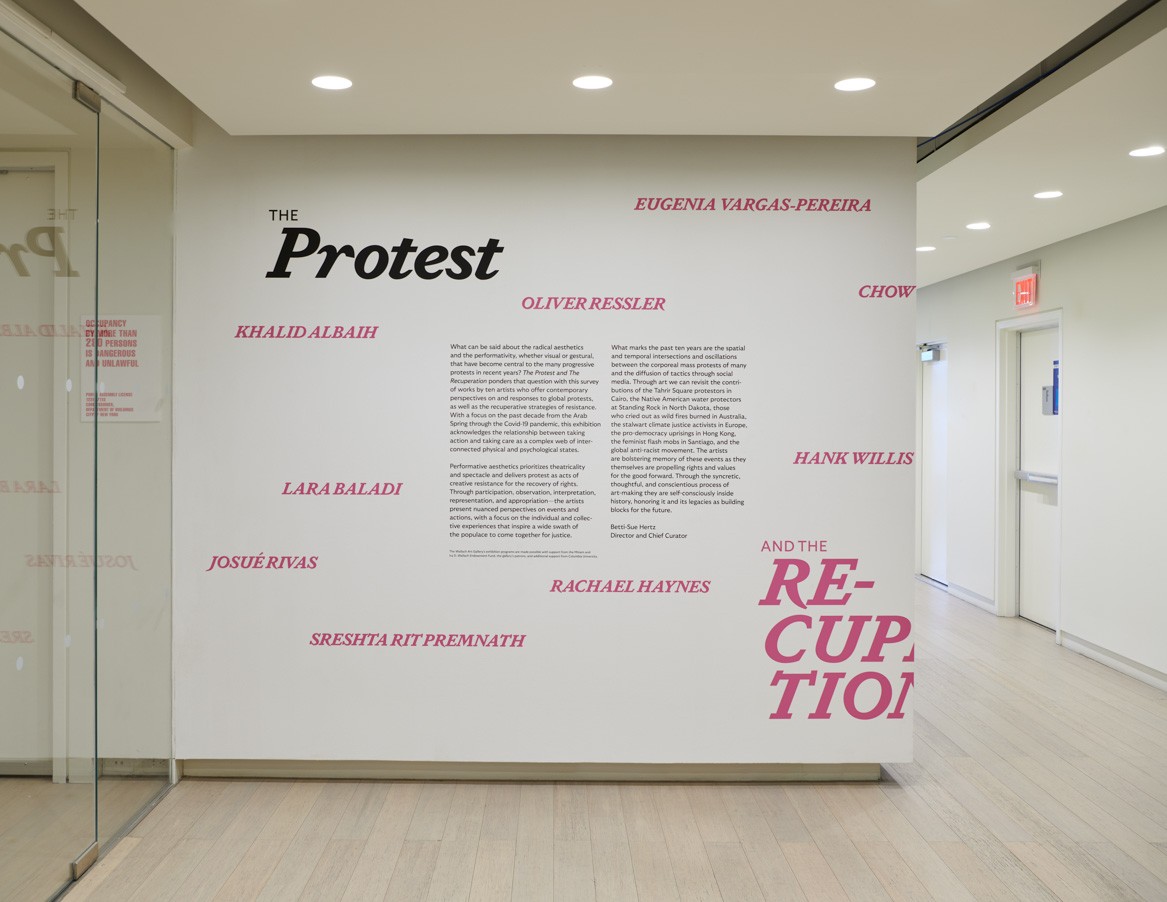
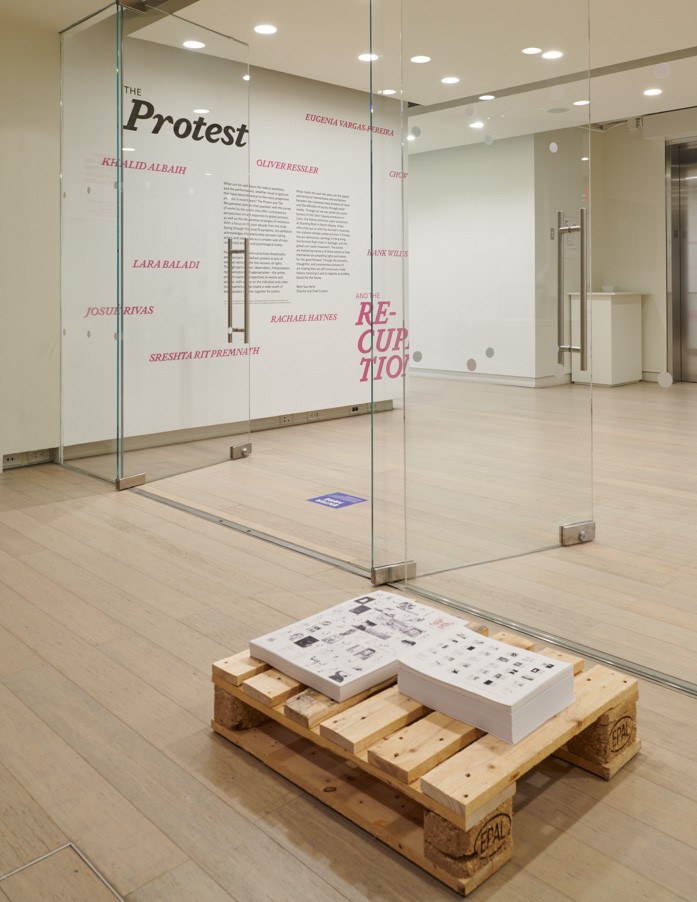
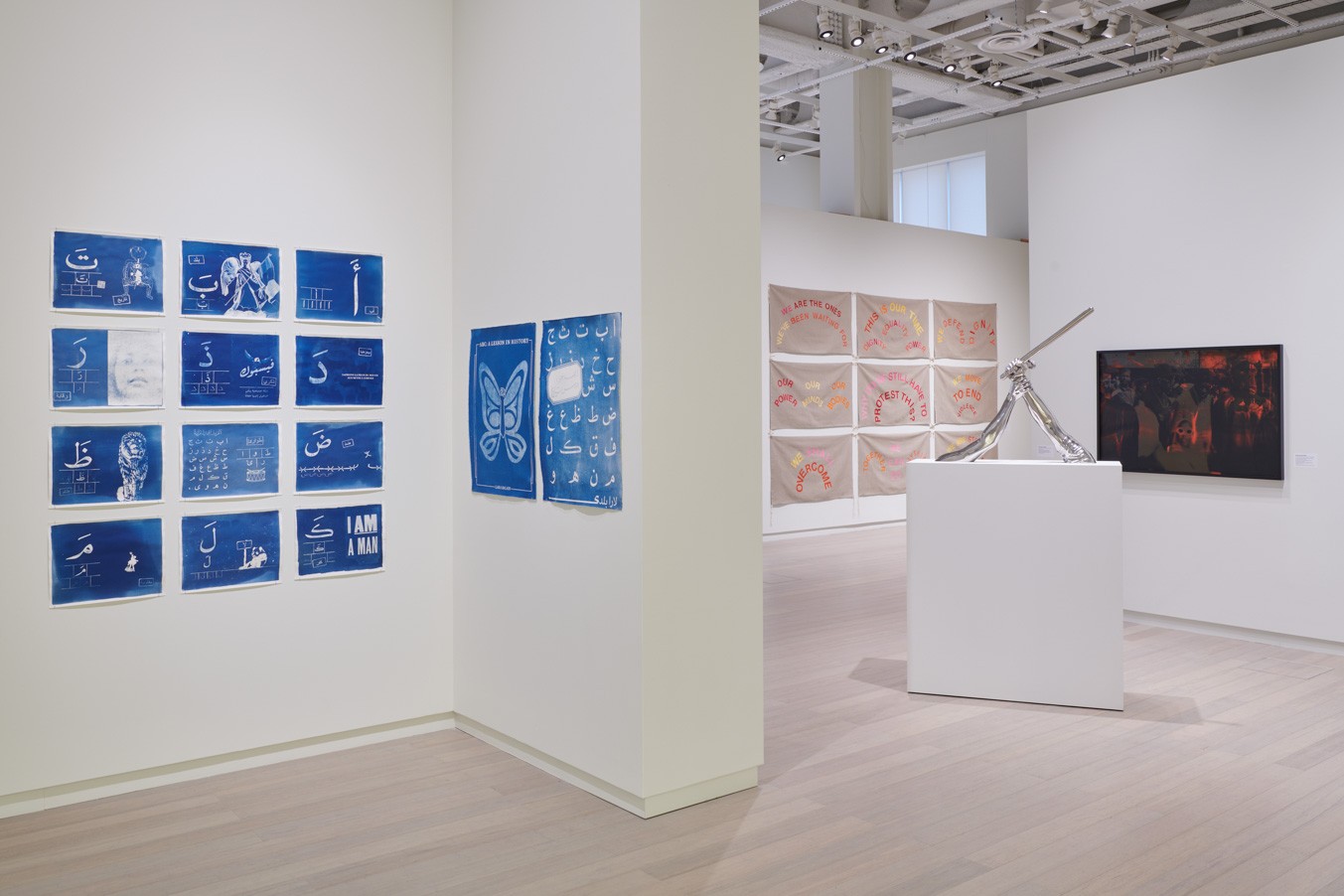
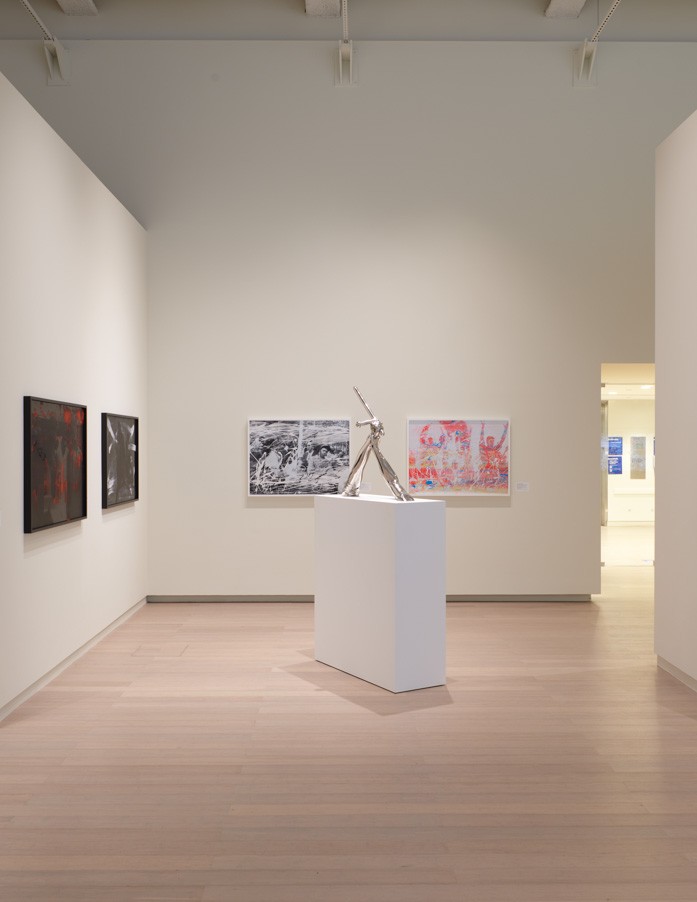
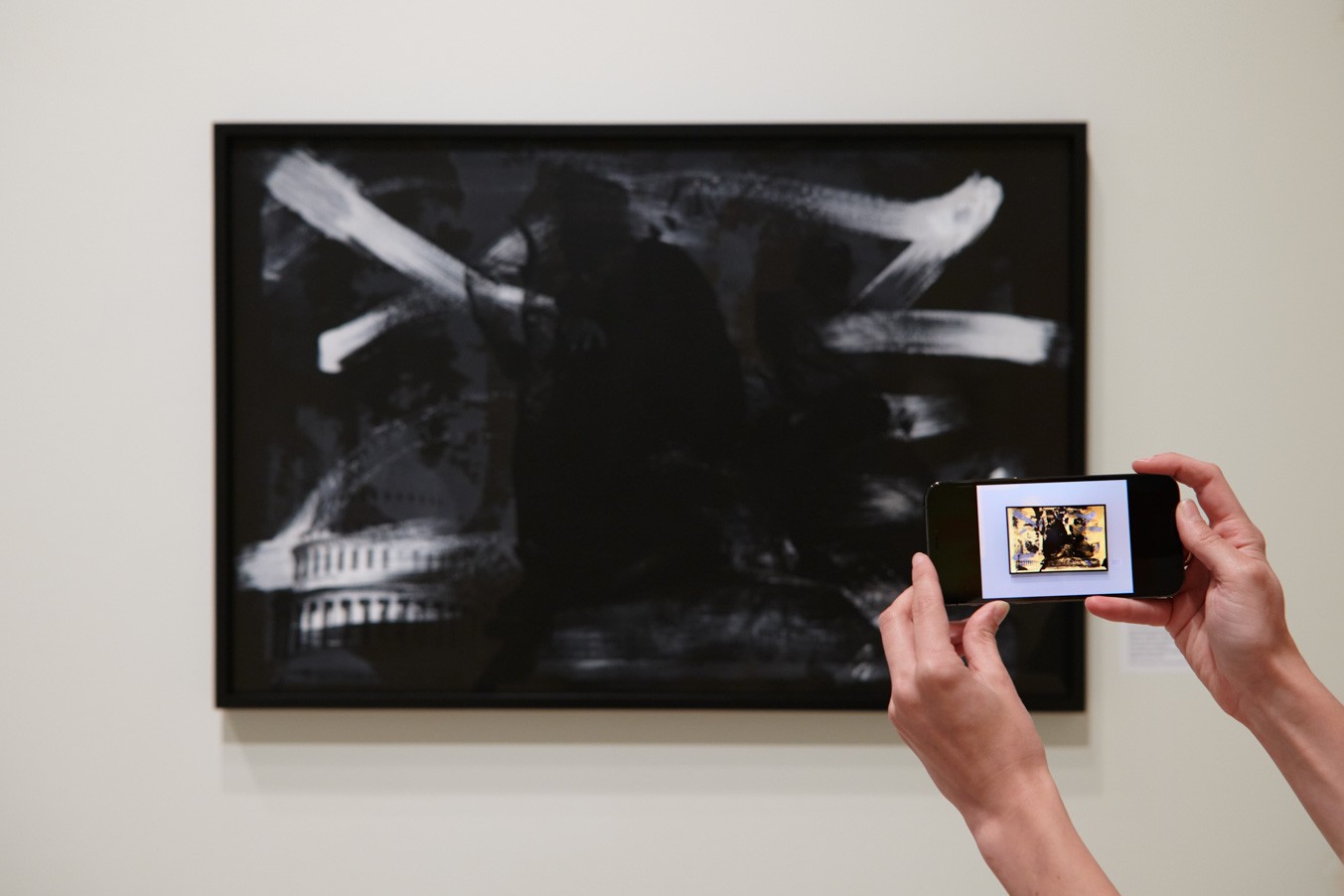
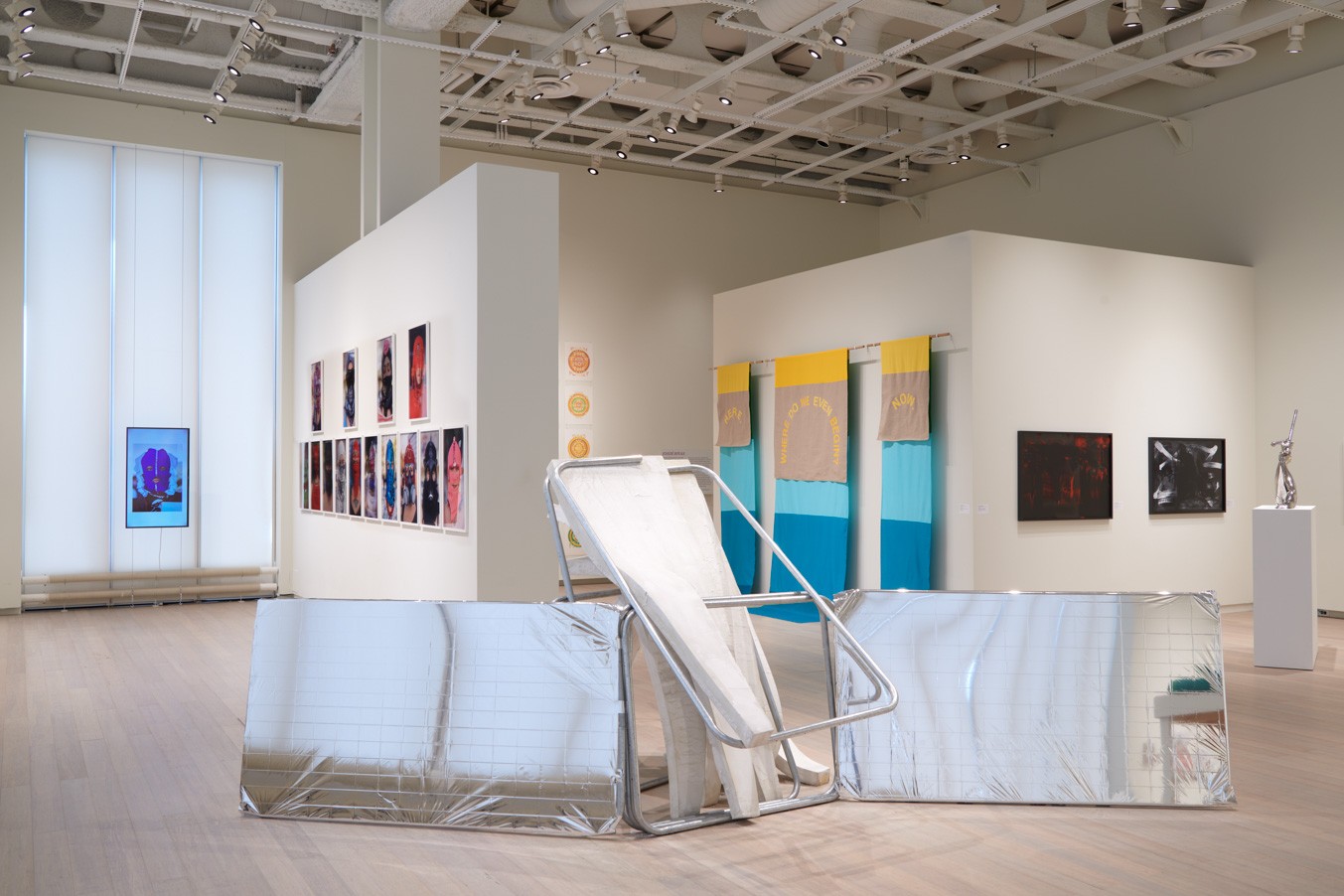
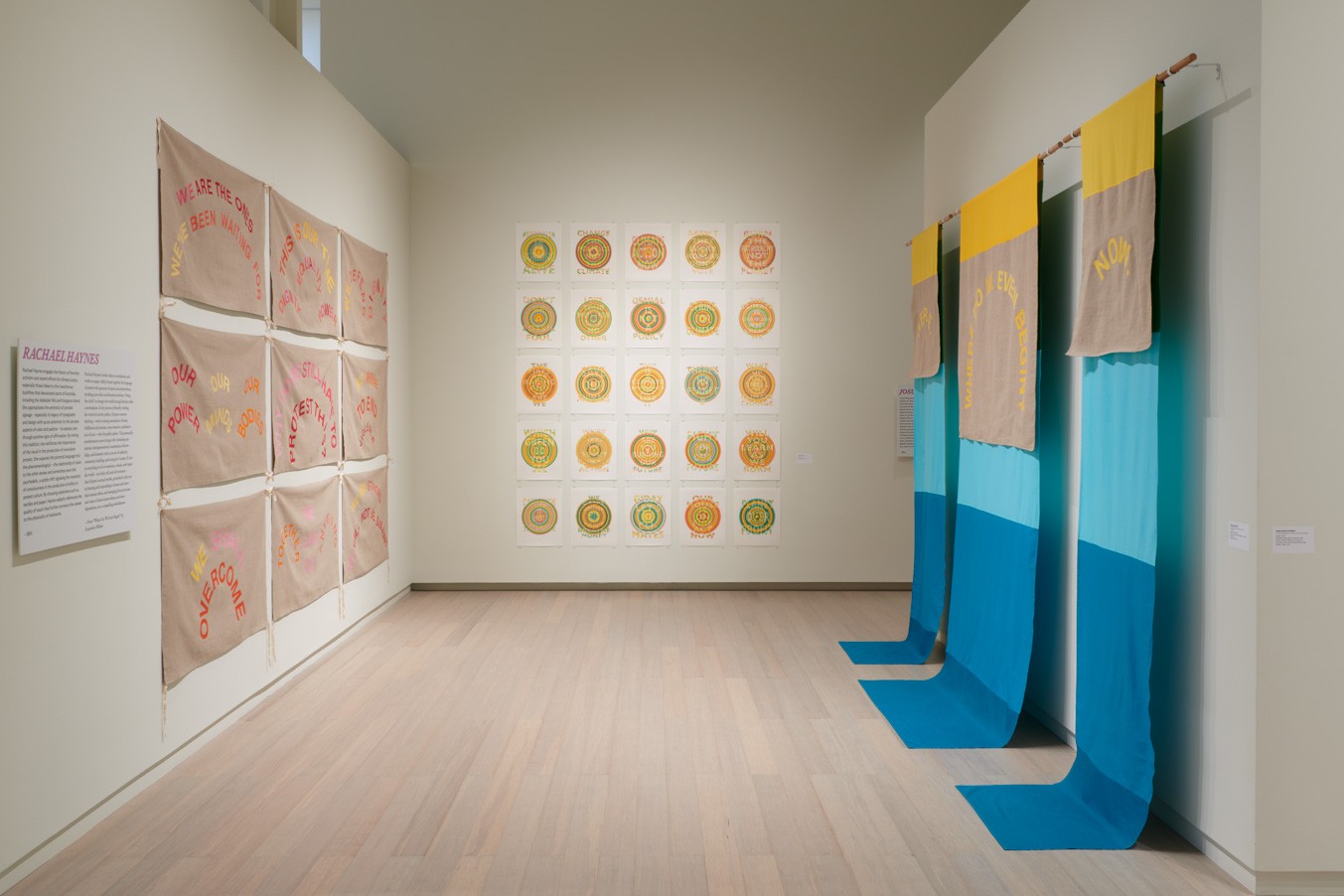
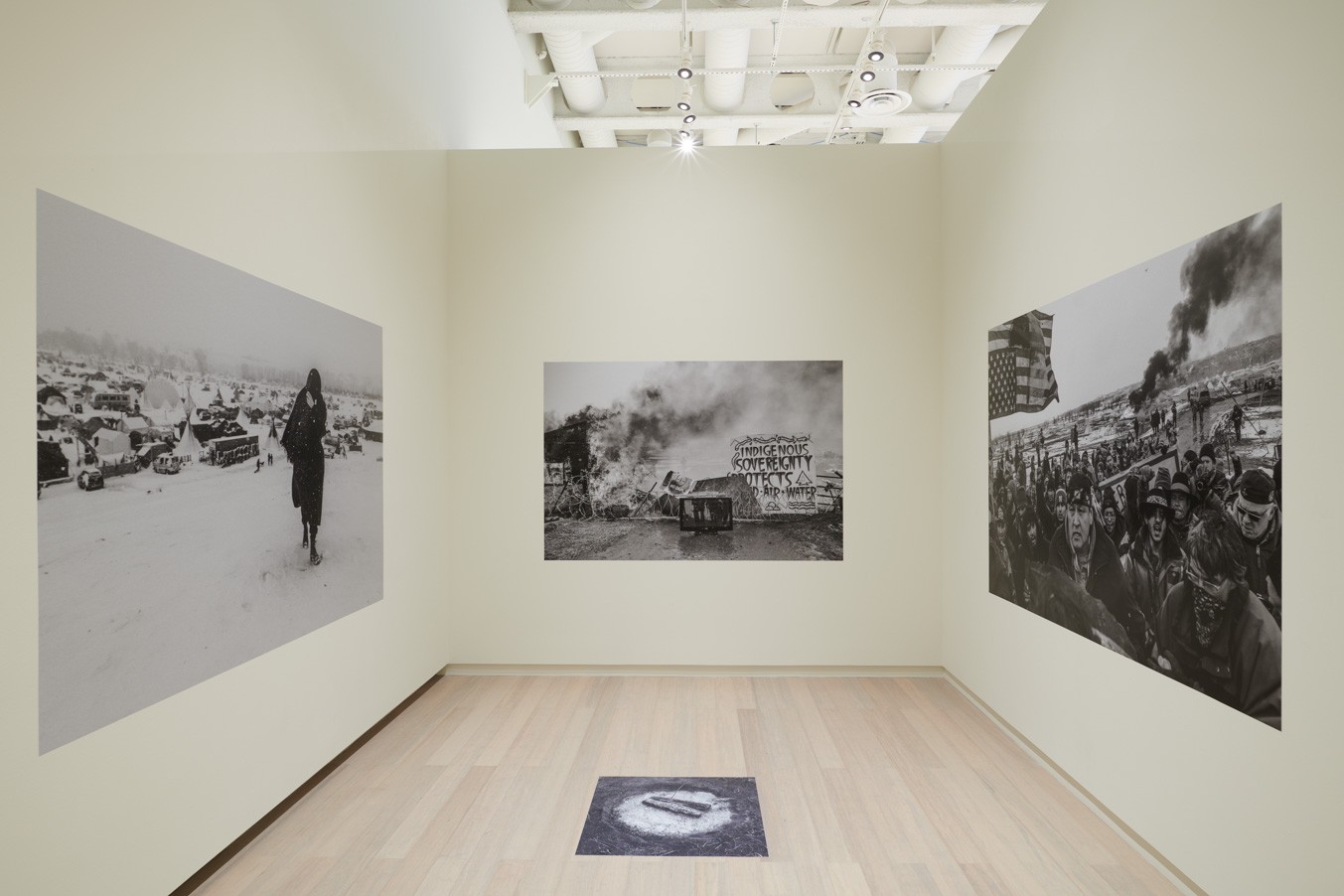
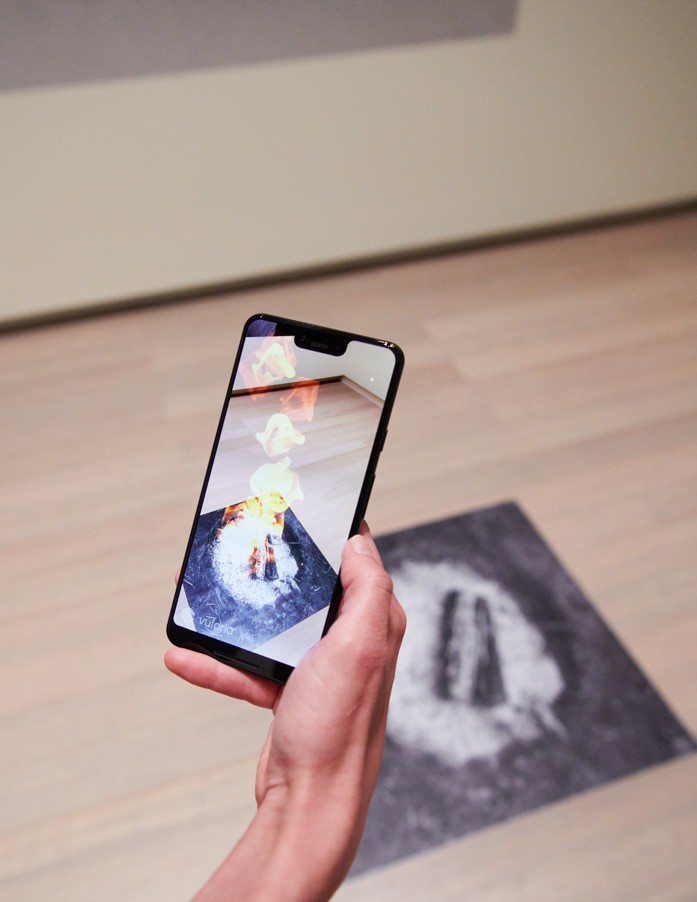
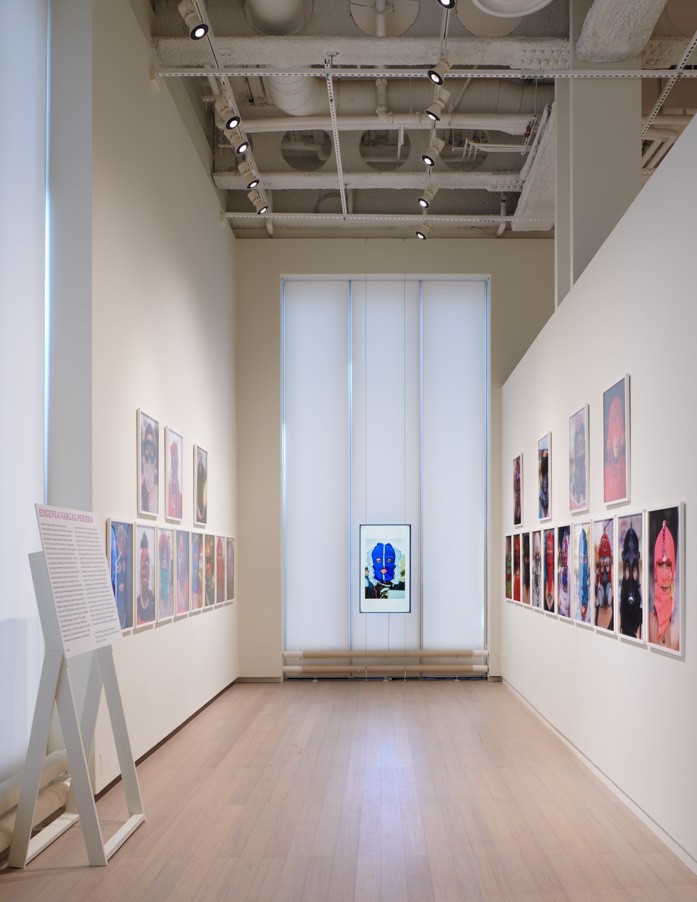
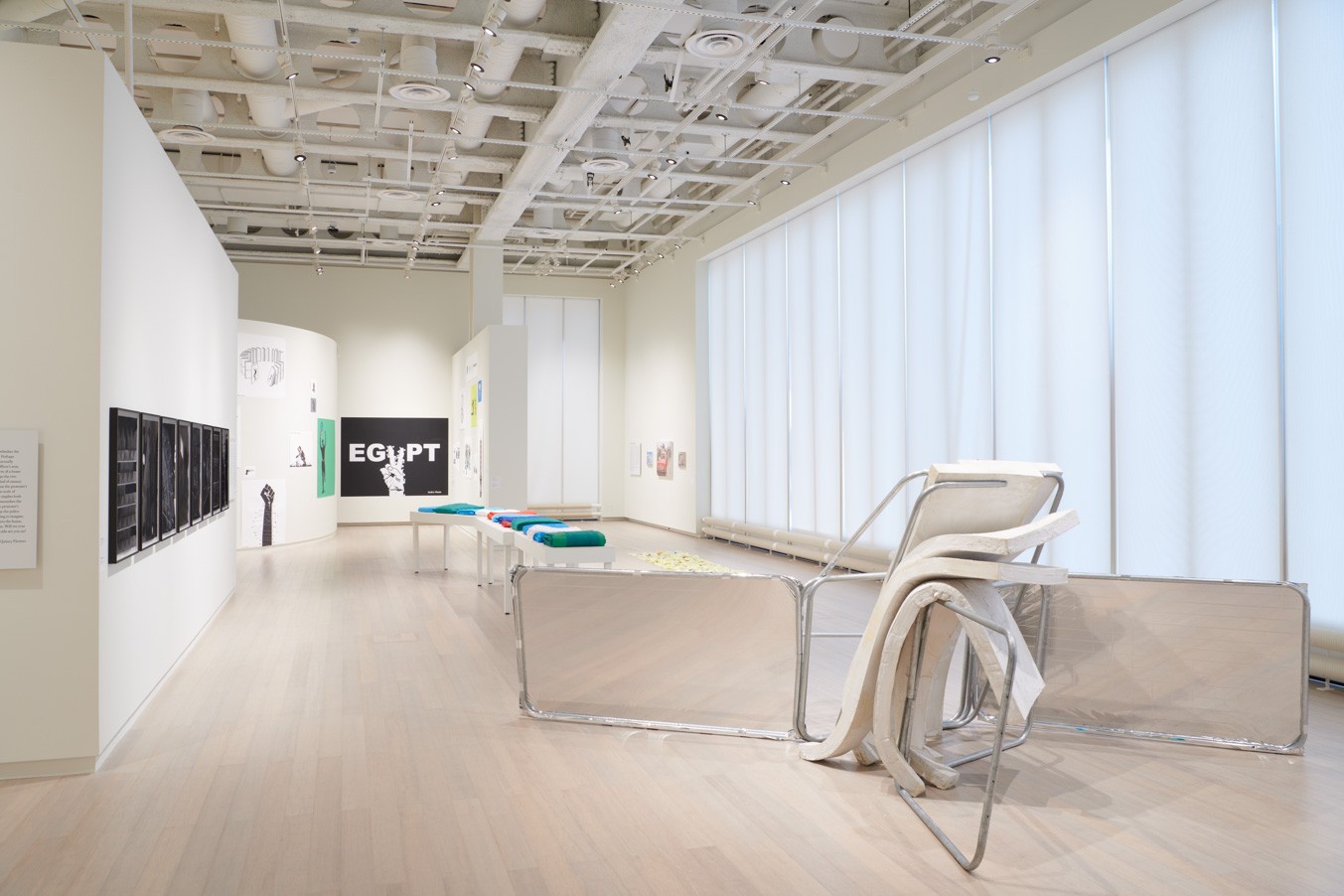
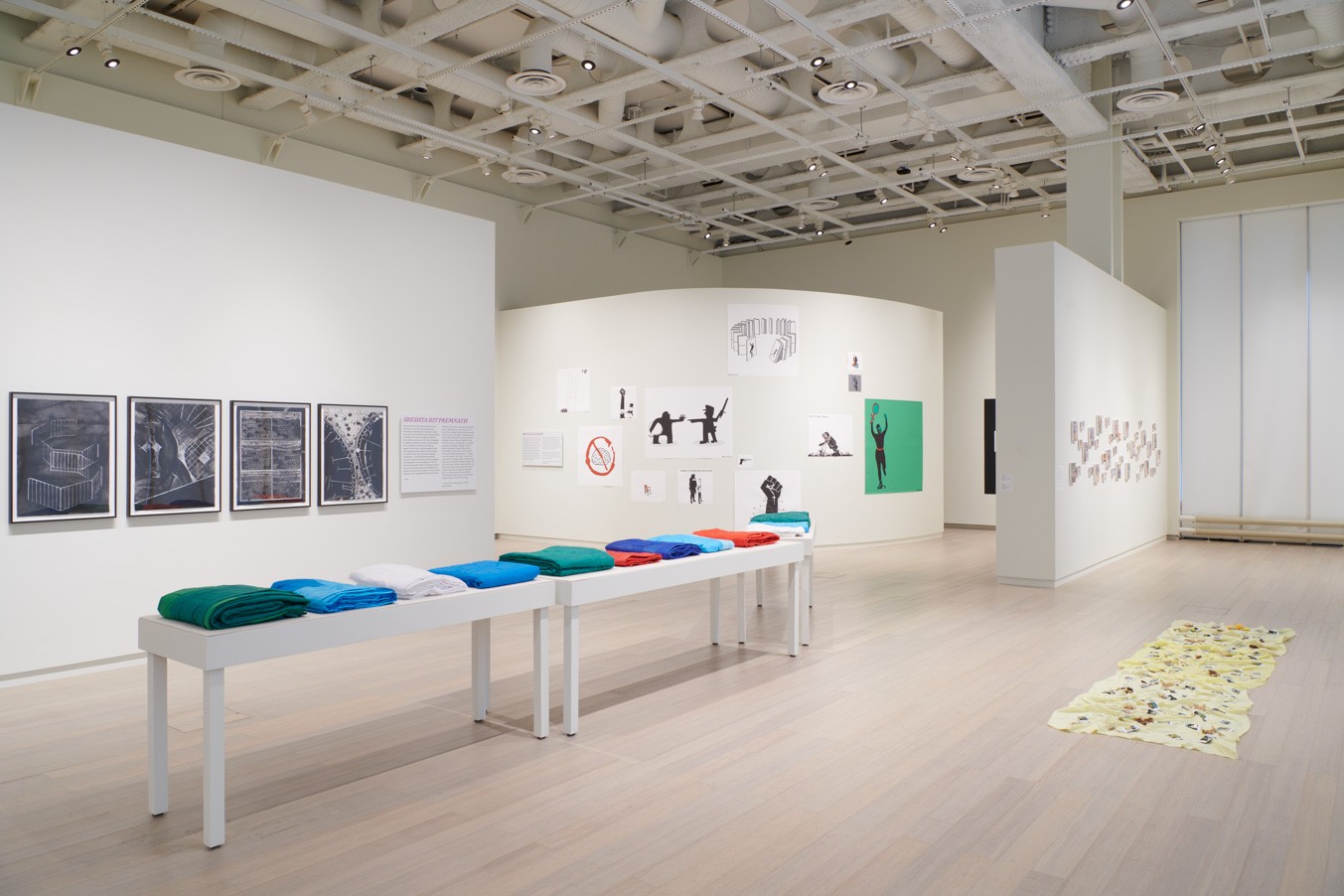
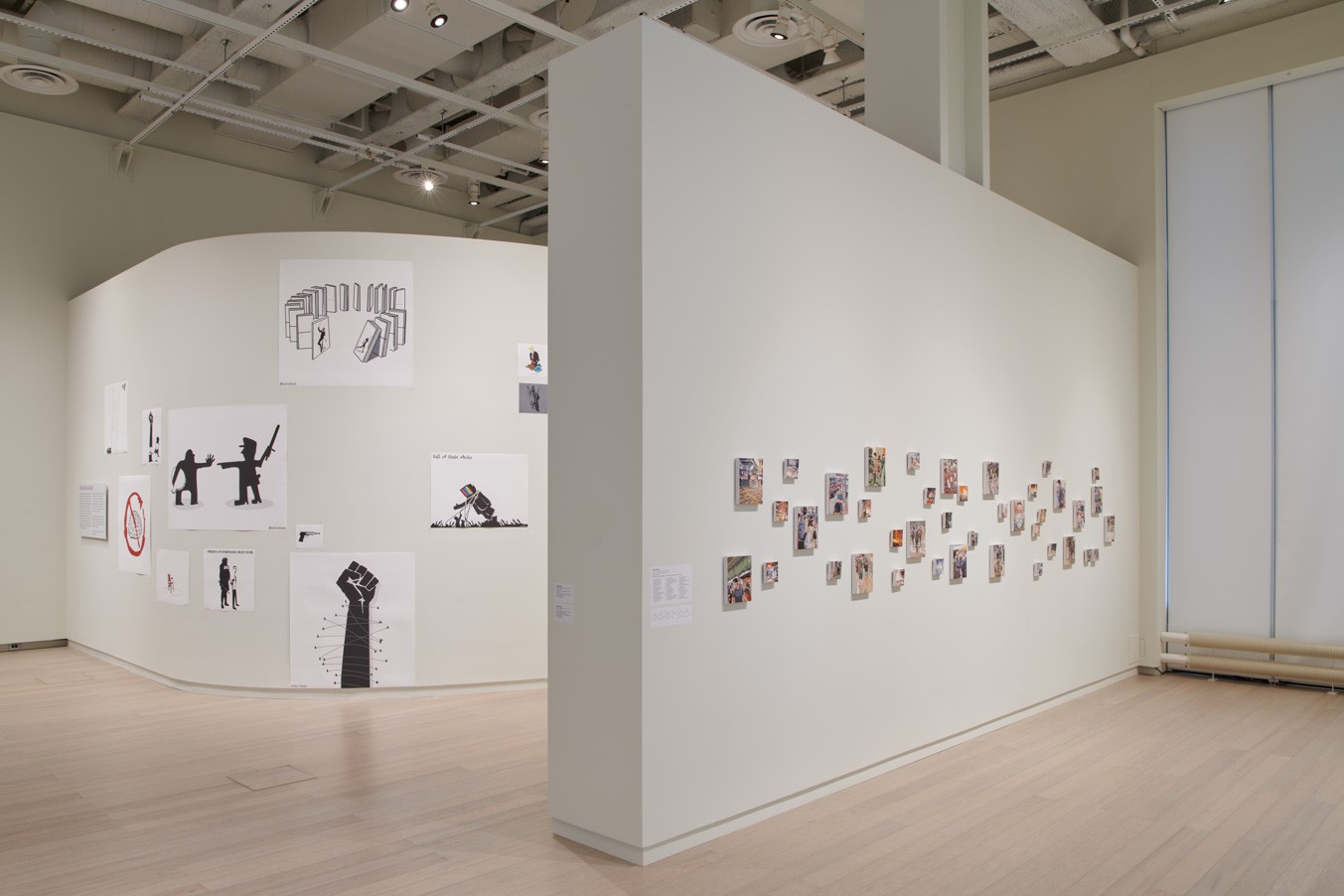
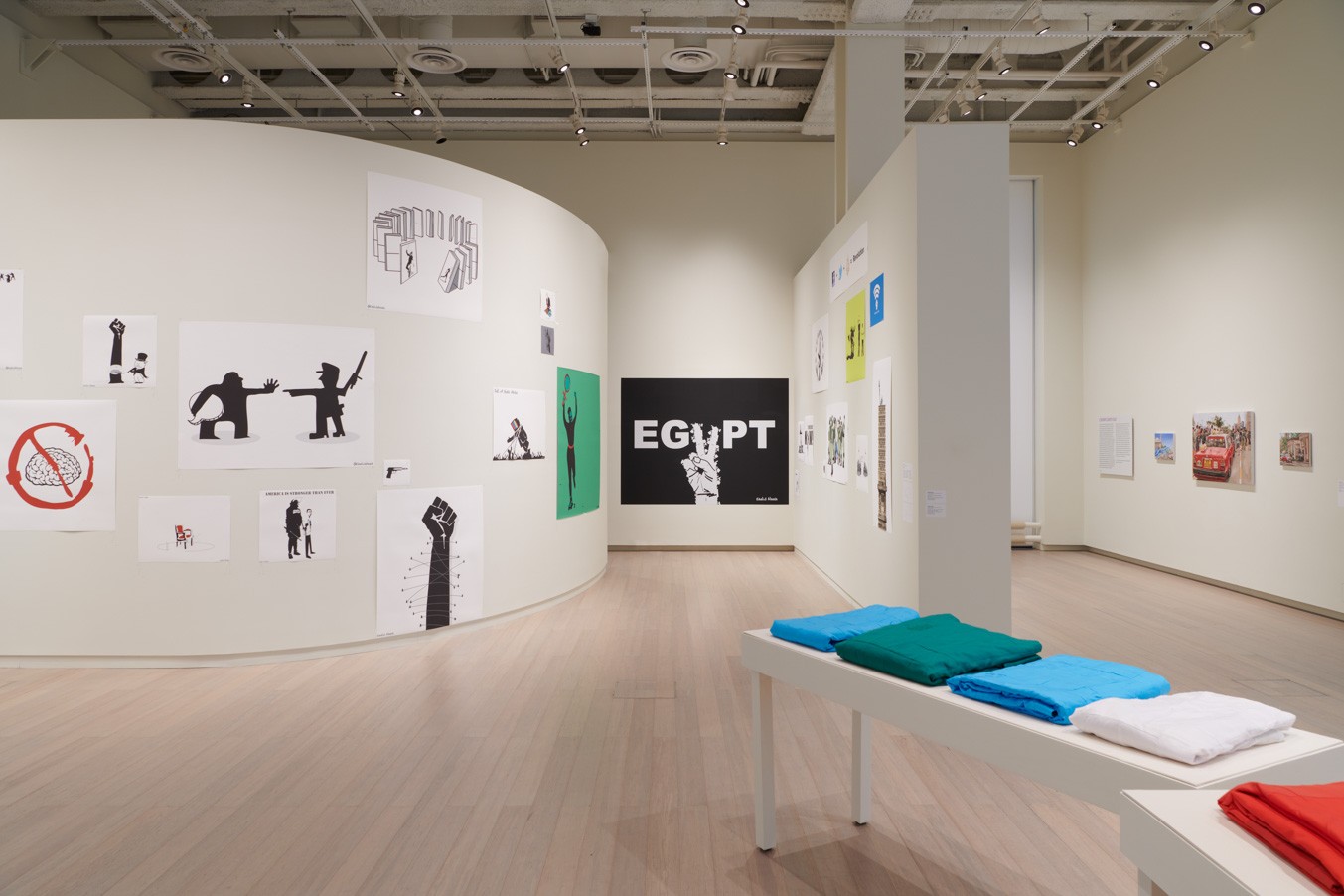
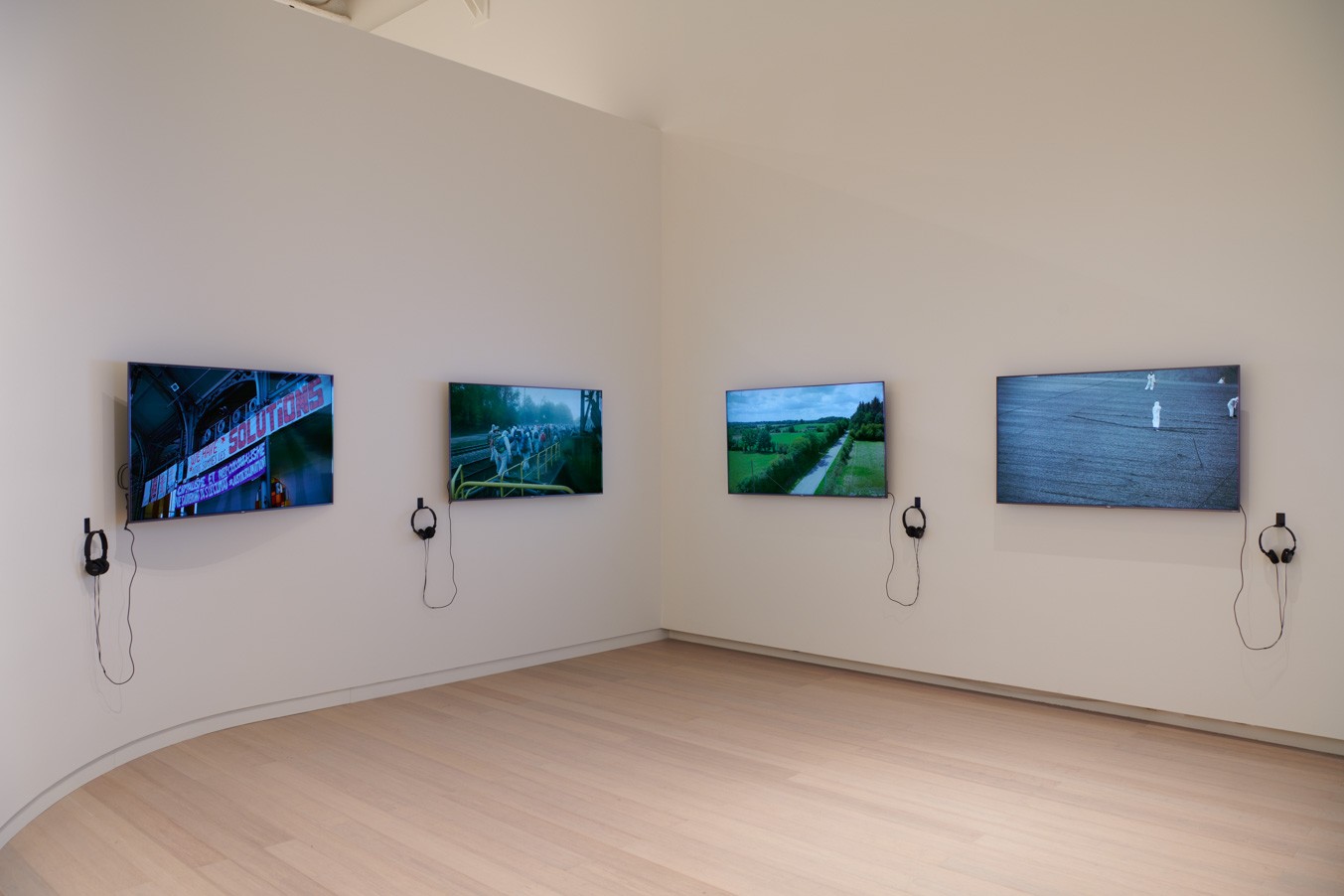
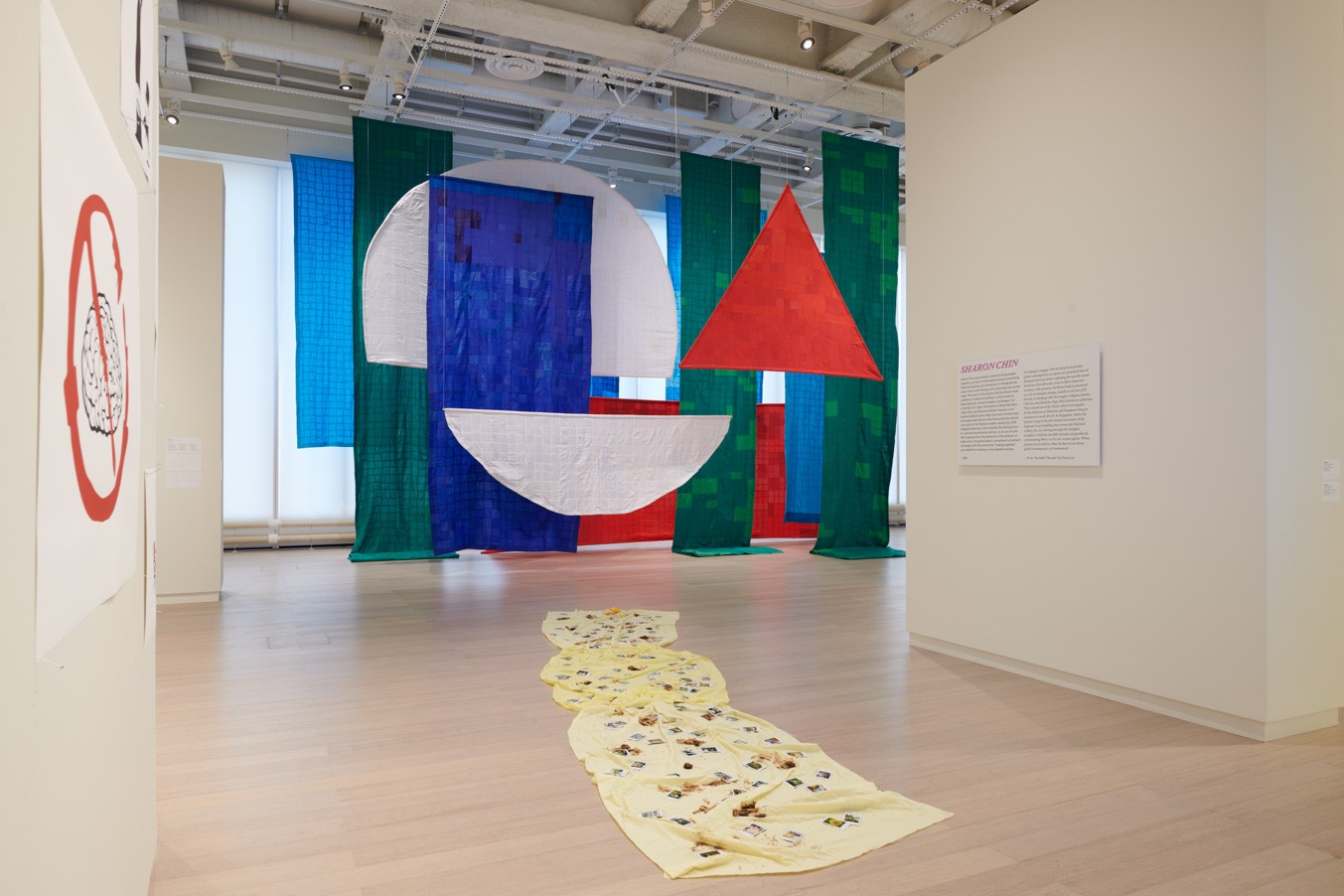
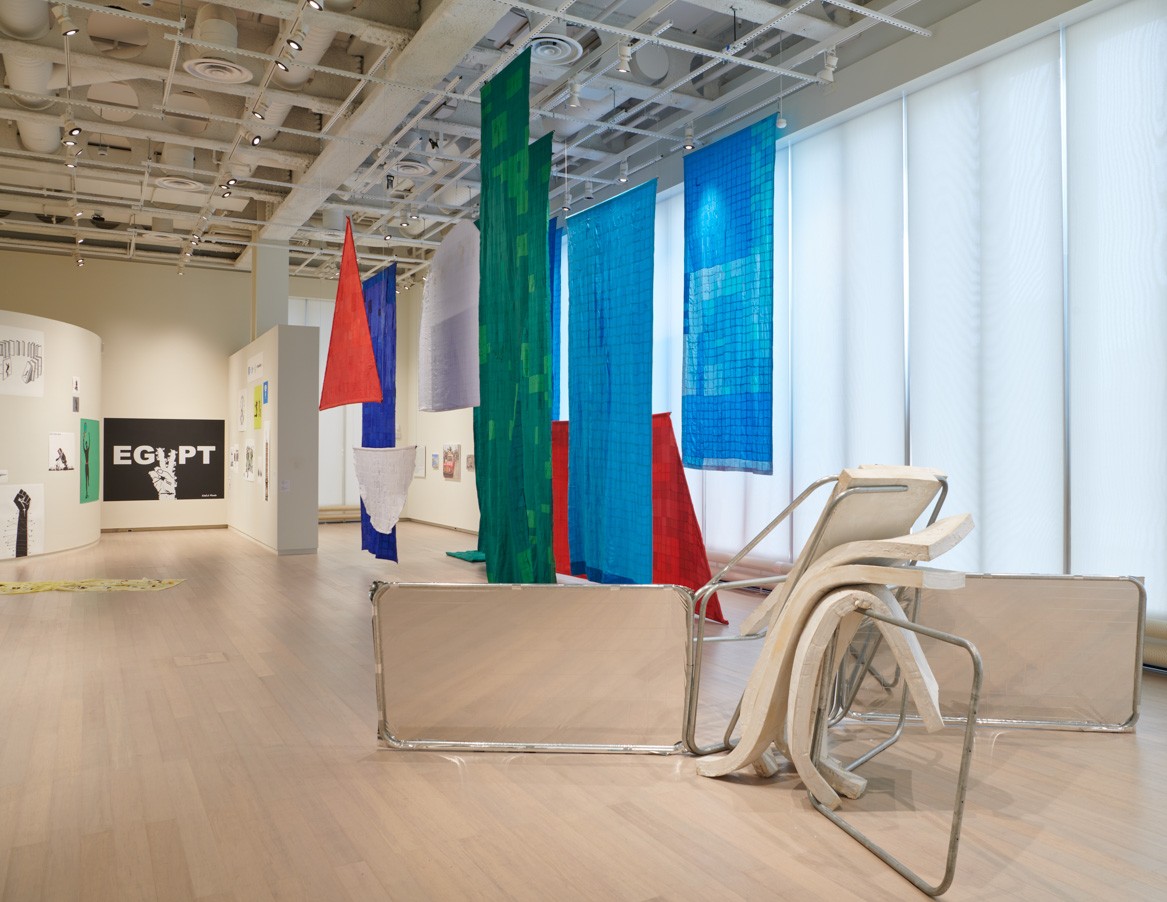
The Protest and The Recuperation also focuses on work addressing spaces of comfort and care, places for recuperation, whether private or public, to regroup and reboot for the next round of resistance, the next act of defiance against corruption, oligarchy greed, and “feet dragging” on critical measures to curb, for example, dramatic climate change events, white supremacy or ethnic cleansing. It includes works within the galleries, participatory event-based projects, intellectual programming, a film screening series, as well as education programs.
In conjunction with The Protest and The Recuperation the Gallery will issue a richly illustrated publication co-edited by Betti-Sue Hertz and Sreshta Rit Premnath.

